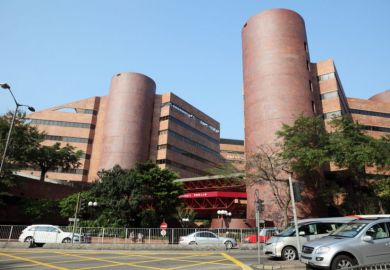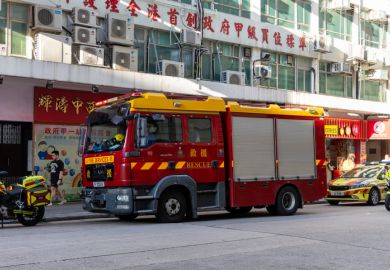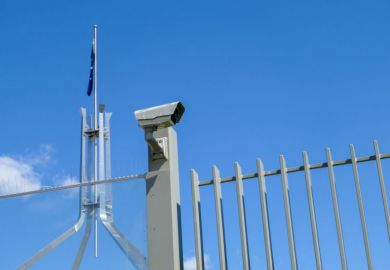The Hong Kong Polytechnic University said that its campus was in “complete disarray” as a small core of protesting students and staff remained barricaded from besieging police.
The week-long siege at PolyU has dragged on despite the efforts of mediators. The police have used increasing force, including tear gas and sponge grenades, and have staged a lockdown that allegedly also trapped social workers, first-aid volunteers and parents looking for their children, The South China Morning Post reported.
PolyU’s leaders planned to enter campus and negotiate a surrender on 18 November, but were thwarted when the police advised against the move “in view of the dangerous conditions onsite”. Teng Jin-Guang, PolyU’s president, resorted to recording a video for the sequestered protesters, while staff and faculty waited outside. “We hope that the students who are willing to leave might be comforted to see their teachers waiting there to support them and wish them safe,” said a 20 November appeal letter signed by seven members of the university’s senior management team, including the president, the council chairman and the provost.
“Polytechnic University campus has been seized for quite some time already, and we are extremely worried about the dangerous situation in the campus,” Carrie Lam, Hong Kong’s chief executive, said on 19 November. A “peaceful resolution” could be achieved only with “the full cooperation of the protesters”, she said. Later that day, about 800 people – including some 300 minors who would be pardoned from immediate arrest – left PolyU peacefully.
However, a small but determined core of students and staff remained barricaded on campus on 20 November. John Lee, Hong Kong’s secretary for security, warned that “it will be dangerous for them to remain”, adding that “it is important that we all try to de-escalate the whole matter”.
The perimeter of the city-centre campus remained roped off and guarded by riot police on the afternoon of 20 November. A small number of people were allowed entry to campus after having their university IDs and bags checked. Rifle-toting officers patrolled the area between the university and a major cross-harbour tunnel, which remained shut because of protest-related damage.
In the area around campus, workers cleaned up bamboo barricades, broken glass and bricks pulled up from the pavements. The closest subway station, as well as nearby history and science museums, remained shuttered.
“The campus is in complete disarray,” the letter from PolyU’s administration said. “Dangerous chemicals and piles of charred wreckage are on the ground, emitting an acrid smell that may affect human health.”
During recent battles at the Chinese University of Hong Kong, protesters allegedly took laboratory chemicals to make petrol bombs, which were found in the thousands on campus, according to the police. CUHK’s departmental offices were closed for the rest of the week, and the nearby University MTR subway station remained shut. All Hong Kong universities have already cancelled in-person classes and exams for the rest of the term.
The level of destruction on the campuses is so great that polling stations near PolyU, CUHK and the University of Hong Kong will be relocated during district council elections on 24 November.
The tensions on campus coincide with larger demonstrations against perceived police violence and threats to Hong Kong judicial independence by the Chinese authorities. Mass protests have persisted for about half a year.
Register to continue
Why register?
- Registration is free and only takes a moment
- Once registered, you can read 3 articles a month
- Sign up for our newsletter
Subscribe
Or subscribe for unlimited access to:
- Unlimited access to news, views, insights & reviews
- Digital editions
- Digital access to THE’s university and college rankings analysis
Already registered or a current subscriber?














